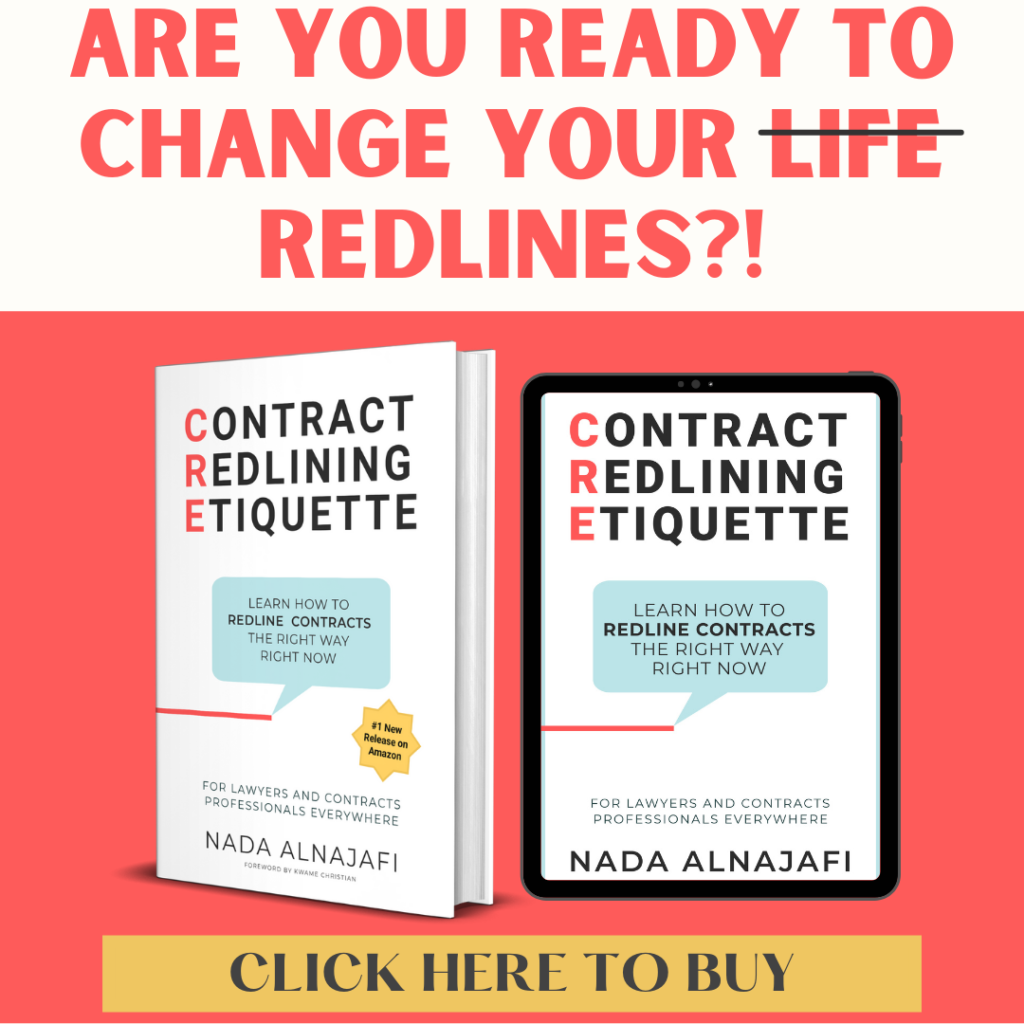KEY TAKEAWAYS:
- Contract playbooks capture information and positions within a contract based on your negotiation strategy.
- If there is an adequate overlap of contract volumes, complexity, and risk, you should seriously consider creating a contract playbook.
- A good playbook will be easy to navigate and appetizing so people can find, take, and replenish what they need.

A “playbook” in general contains a sports team’s strategies or how they plan to coordinate to win. More generally, it is a collection of shared tactics frequently used in a competitive activity.
Contracts are (and can be usefully thought as being) a team sport. A contract playbook contains the information your team needs to review contracts strategically and efficiently.
A good contract playbook outlines standard contractual clauses and fallback or preferred positions on each one. It should organize the necessary information in a way that makes it easy for each team member to play their part.
This article provides an overview of when to use a contract playbook and what to consider in creating one that your team will actually use.
The Audience
Who is the audience of the playbook? This depends on the contract and your organization size. But the answer to this question is usually driven by specialization and hierarchy. Typically, legal on one side and business (i.e., sales, procurement or other commercial team members) on the other. There may also befurther specialized or perhaps more senior members on each side.
The Need
When do you need a contract playbook? You may not always need a playbook, but in the right circumstances they are invaluable. There are three elements that help determine whether you should use a contracts playbook: 1) volume; 2) complexity; and 3) risk.
You probably do not need a contracts playbook if you:
- Are a solo contract reviewer, do not intend to work as a team, or do only unique things each time so there is no useful information for repeat use (i.e., no volumes);
- Find the work and required collaboration simple, each team member is an expert; and you all understand each other perfectly (i.e., no complexity); and
- Think the potential difference in benefits between doing your contracts well versus badly does not justify the investment or effort (i.e., no risk).
If, on the other hand, there is an adequate overlap of volumes (lots to do with patterns or similarities), complexity (hard to do consistently together), and risk (enough at stake in terms of profits vs. liabilities), you should seriously consider creating a contract playbook.
The Content
What goes into a playbook depends on the team’s needs, but playbooks often include a combination of the following information:
| What it contains | Who needs it | Why |
| Sample Language | Everybody | It is inefficient to draft clauses from scratch for similar situations. It is also risky, other than for attorneys with adequate training or experience. |
| Instructions / positions | New or unfamiliar team members | Document the triggers or issues you negotiate and your positions. Familiar users will use these less, but it pays to be prepared for churn in your team and changes in your positions over time. |
| Statements of rationale | Negotiators | Explanations for your stance in the form of ready to use comments or highlighting risks for internal confirmation or external articulation. You could try using ChatGPT to help create a negotiation table with arguments from each side. |
| Inputs and approvals | Those coordinating with specialized or leadership roles | Documenting required inputs and approvals in specialized contexts or for positions involving greater risk, helps coordinate and manage risk. |
| Conceptual/ contextual explanations | Inexperienced or untrained team members | Playbooks are not a substitute for training but greatly help conversations if they include explanations of key legal and business concepts or company or subject matter specific context. |
| Checklist items | Almost everybody | Highlighting or listing key issues or items that tend to be missed. This is particularly helpful when reviewing counterparty paper. |
For example, the illustrative excerpt below provides guidance for dealing with proposed changes to our NDA template in this case counterparty resistance to a marking requirement where we are primarily the recipient of confidential information and want to limit our obligations. In addition to sample language for the proposed deviation, the playbook provides rationale, related risks for us, approval or inputs required, other linked positions.
Sample Excerpt from NDA Contract Playbook
| Deviation 1: Including ‘reasonable judgment’ standard as an exception to the marking requirement. Parties may resist the marking requirement in Section 2 because they worry about failing to identify sensitive information and excluding it from the confidentiality obligation. Instead, they may want our employees to use reasonable business judgment to decide if a piece of information is confidential in nature, regardless of whether it is identified as such. This deviation increases the risk of the counterparty’s information being disclosed without authority, since each employee handling the information could potentially misconstrue a sensitive document as not being confidential. Accept this deviation only if the discussions contemplated under the NDA are of high importance, confidential information is specifically described under section 3 and the counterparty is not providing sensitive information. If we agree to this deviation, retain the standard confidentiality period under Section 6. | Sample Language Section 2: To receive the protection of this Agreement, Confidential Information disclosed in tangible form must be marked as “Confidential” or with a similar legend and information disclosed orally must be identified as confidential or the like and then summarized in a writing by the disclosing Party provided to the receiving Party within 30 days of the disclosure, unless under the circumstances, a person exercising reasonable business judgment would understand such information to be confidential or proprietary. Approvals and Inputs: Legal with business inputs |
The Style
Form follows function. Playbooks can look different so do not fixate on something that may not be what you need. A good playbook, like a properly laid out buffet will be easy to navigate and appetizing so people can find, take, and replenish what they need.
For example, playbook styles can vary by:
- Template – Playbooks for responding to redlines of your company’s template should be organized differently from one used solely or primarily to redline or markup counterparty paper. For counterparty paper, keep your mandatory terms for insertion handy. If you do both, combine required features.
- Contract Type – Playbooks that support the review of statements of work will be different from playbooks for negotiating master terms.
- Delivery – Playbooks can be relatively prescriptive or illustrative (I prefer illustrative). They can be relatively dynamic or static (never entirely static).
- Scope – Playbooks may incorporate or be supplemented by separate documentation to support training, illustrate process, or facilitate technology adoption or implementation depending on how your team plays.
- Format – Some people create them in Microsoft Word which is what most legal teams are comfortable with. Others like to use OneNote, PowerPoint or tables to help organize the information, or directly work with other contracting technology.
Technology vs. Playbooks
Contract playbooks and contracting technology should ideally work together. Contract reviewers use contract playbooks during the redlining and negotiation stage of the overall contract lifecycle management process. A good contracting platform will be able to automate your contract playbook into the tool. Where you need playbooks, they should be put in place before you choose, customize, and implement contract technology for better outcomes.
Example Playbooks
Here are a few publicly available sample playbooks:
- NDA Playbook shared by TechGC
- Procurement Contract Playbook shared by TechGC
- Sample Playbooks from the Association of Corporate Counsel
Because contract playbooks are so specific to the users and organization’s preferences, there is not a one-size-fits-all approach to creating them. In that way, playbooks are like contract templates. Each template is built for a particular need or purpose. While you can leverage another playbook as a starting point, it is important to customize them to your specific needs.
Your positions and negotiation strategy are often unique. How your playbook looks and functions can also be distinct. In addition to capturing required content, invest thought and effort or get the help of someone experienced in playbook design to drive ease of use and satisfaction for your team.

















